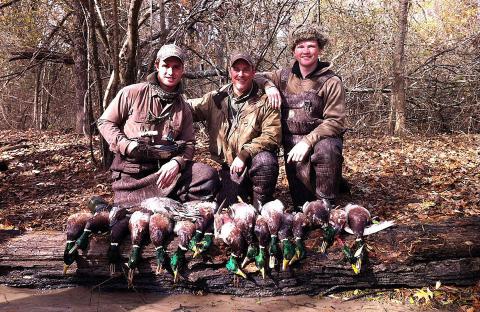Josh Raggio is a duck hunter and call maker from Raymond, Mississippi. You can visit his website at http://www.raggiocustomcalls.com.
How to Duck Hunt Public Lands By Being on the X
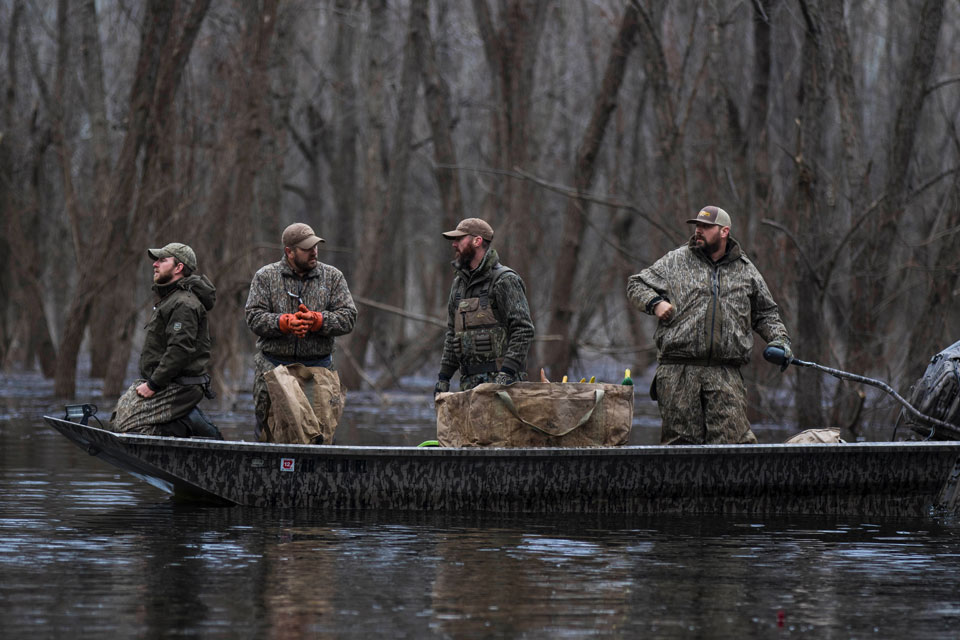
The number-one requirement for a successful duck hunt is “be on the X.” In other words, be where the ducks want to be before they get there. In the past, I’ve always hunted public land, but this past year, I was fortunate enough to be able to hunt some private land. This year I hunted 90 percent private land and only 10 percent public land.
To get on the X on public lands, you have to concentrate on learning water depths on the public land where you’re hunting. I hunt woods (flooded timber). Depending on the amount of hunting pressure, wind direction and several other factors, ducks will be looking for new water to feed in, not only where they can find food, but also where they can dodge hunting pressure. In the areas I hunt, ducks usually feed all night in the fields and come into the flooded timber to rest during the day. During the early part of duck season, you’re looking for an open hole in the timber where the ducks can drop down and sit on the water. Later in the season, the ducks will be searching for smaller, open water holes that are usually hard to reach. I’m generally hunting food sources close to water on private land.
Since the X where the ducks want to be changes quite a bit from the beginning of the season to the end of the season, hunters may or may not take ducks out of the same hole all season long. Of course, some holes are better than others. But most duck hunters are racing toward those holes every morning, and the person who can get to the hole first may get some really good shooting. You’ve also got to know what type of setup makes one hole better than another hole on the day you’re planning to hunt. For instance, certain holes may have what we call a short side where the ducks can come through a certain gap in the timber, if they have the right wind. The same hole on a different wind may have tall trees on the other side of the hole, and you know that it’s hard for the ducks to get down into that hole, if they’ve got that certain wind type. If this happens, we look for a different spot for the next day.
How to Find a New Duck Hole to Hunt
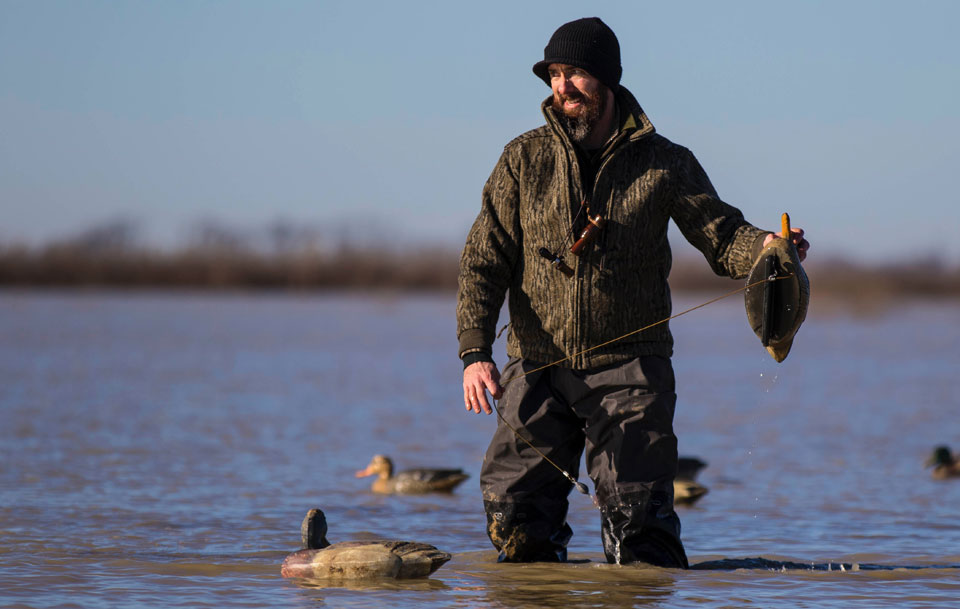
There are several factors my friends and I use to find a new duck hole on public land. We study maps and mark some areas that we want to scout when we get through hunting. So, after we’ve taken the number of ducks we want to take, we’ll scout those new, possible holes to see if there are any ducks in them. When you look at a hole, you must decide what wind direction the ducks most likely will come into that hole. Typically, you won’t jump a bunch of ducks late in the afternoon after your shoot is over. So, even if you identify a new hole that looks like it will be productive, don’t get discouraged if there are no ducks sitting in that hole when you arrive.
The maps we depend on most often are Google Earth maps. We’re looking for holes in the forest canopy on the public lands where we’re hunting. If we don’t have a great hunt the day before, we’re constantly watching the direction that the ducks are flying, and comparing that to Google Earth to see where they possibly may be going. Also, we search for high ducks that are dropping down into a hole. We’ll look at Google Earth on our cell phones, try to determine the exact locations where those ducks are dropping into and put a pin that marks that spot as a waypoint. After the hunt, we’ll use our Google Earth maps to direct us to the holes we want to scout.
Because we’ve hunted the same public lands for several years, my hunting buddies and I have waypoints we’ve identified over the years. So, I’d advise new public-land duck hunters to constantly be marking waypoints where they locate ducks, and note which wind direction each waypoint must have to make it the most productive for taking ducks.
More Than a Duck Killing
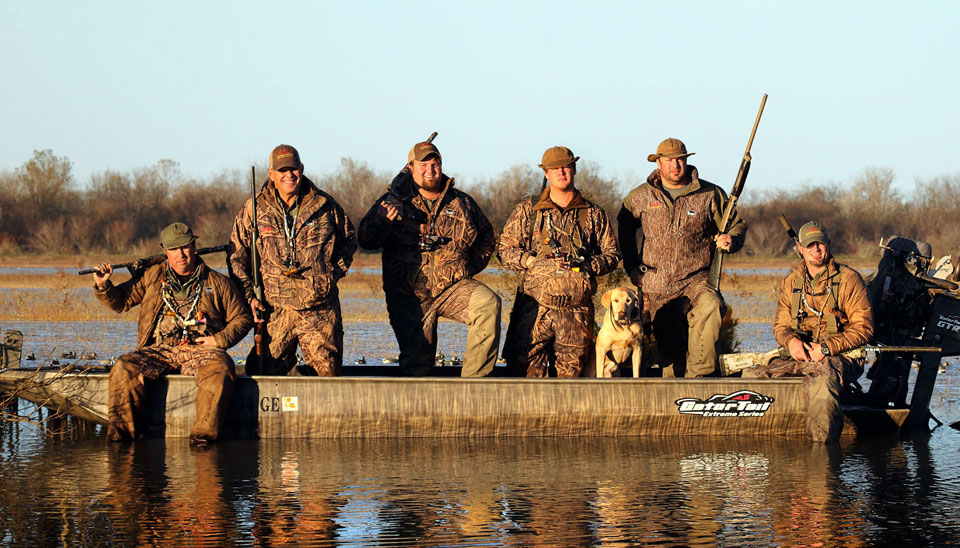
People always ask me what an average bag of ducks is for 6-8 hunters hunting on public land. But our duck hunts are about more than the number of ducks we harvest.
Each morning when my buddies and I go duck hunting, we want to take ducks. But harvesting ducks is a bonus for us, we just like to be out in the woods and on the water with our friends. I think we have as much fun cooking and eating breakfast and fellowshipping as we do taking ducks. Harvesting ducks is nice, but that’s not all that a good duck hunt means. We cook our breakfast in the boat we use for duck hunting. We have a Coleman stove, and our favorite meal is fried Honey Buns. We usually all bring our own coffee and hot chocolate.
We’re also very secretive about where we hunt. One of the best ways to lose a good duck hole is to tell everybody where it is. We’re pretty hush-mouthed about the areas on public lands that we hunt. In Mississippi, there are quite a few public duck-hunting areas, and numbers of duck hunters. If we harvest a good number of ducks on a morning shoot, everyone will want to know where we’ve taken them. We’ll say, “Right out there in the flooded woods,” or something similar. One of the major keys to being able to take waterfowl throughout the season on public lands is to not tell anybody where you’re hunting.
I think readers need to understand that when we put on our waders and take our retrievers and our decoys, we’re going duck hunting. We’re not going duck killing. Yes, we harvest ducks, but we all love every aspect of waterfowl hunting, which is mostly about building and sharing memories with each other.
One of the main things I like about public-land hunting is each group of duck hunters has its own morals and ethics. Our ethics state we won’t set up close to another group of hunters. I believe that if you follow the moral standard, “Do unto others as you would have them do unto you,” you always can enjoy a good duck hunt. There is no rule on public land that says one group of hunters has to be a certain distance from another group of hunters. However, if two groups set up too close to each other, neither group will take the number of ducks they could have taken otherwise. If a group of hunters sets up too close to us, one or two hunters from our group will get into our boat and go over to talk to the other group of hunters.
They’ll ask, “Do you guys have a plan B or C or another spot you’ll consider hunting? We’re too close to each other for either one of us to have a really good duck hunt, and because we’re so close to each other, we’re going to hurt each other more than we’re going to help each other.”
If that group doesn’t have a plan B or C, we’ll ask them to join our party. We’ll hunt as one group and have a better chance of taking more ducks. This type of conflict often is caused when a group of hunters are late getting to the boat ramp before daylight. Most of the time on the public land we hunt, hunters aren’t allowed to leave the boat ramp until 4 a.m., so if they’re late, they often will set up too close to another group of hunters.
What’s Needed for a Successful Public-Land Duck Hunt
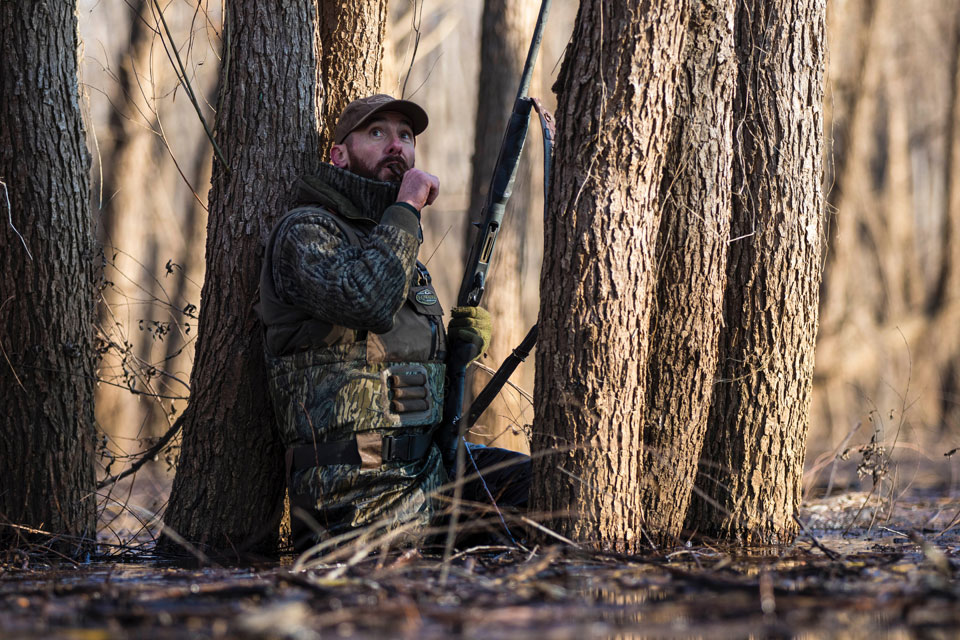
When we go to the place we’re planning to hunt, we hide our boat and take stands in the standing timber. I had a good retrieving dog two years ago, but when he died, I didn’t replace him. However, we have 4-6 hunters in our group who do have dogs, so when anyone who doesn’t have a dog downs a duck, a hunter with a dog will send the dog out to retrieve the duck.
One thing that our group does to increase our odds of getting to a productive hole before other hunters is to arrive at the boat ramp at about 2 a.m. As I’ve mentioned earlier, most of the public lands that we hunt won’t let hunters get on the water until 4 a.m., but we still can arrive at 2 a.m. On some of the land we hunt, we actually can put our boat in the water before 4, and then they’ll have a shotgun-type start. Every place we hunt is different.
Another thing that helps us is that we don’t depend on having only one spot to hunt that day. We’ll usually have 3-4 locations picked out where we feel we can be successful. If there is another group of hunters already set up in our number one hole, we’ve got at least three other places we can hunt without being too close to anyone.
I’m also asked, “What else can make a public duck hunt a great hunt?” That answer is simple - new ducks. When our area gets cold or warm fronts that push ducks either down from the north or back up the flyway from the south, then those new ducks won’t know where the hunters are hiding for at least one or two days.
Wind direction is another key to having a successful public-land duck hunt. The night before the hunt, we study our maps and get a weather report that tells us which way the wind will blow on the next day. Then we pick three or four places we want to hunt, based on that wind direction. These will be sites we’ve hunted before and had successful hunts at when the wind’s right to hunt that spot.
For decoys, we never put out more than about 4 dozen. There may be a few teal decoys, but 99 percent of our decoys are mallards. When it comes to calling ducks, I’ve hunted with the same group so long that I don’t even have to look up when somebody starts calling. I can tell who’s calling, and where the ducks are based on the way they’re calling.
Raggio’s Custom Calls
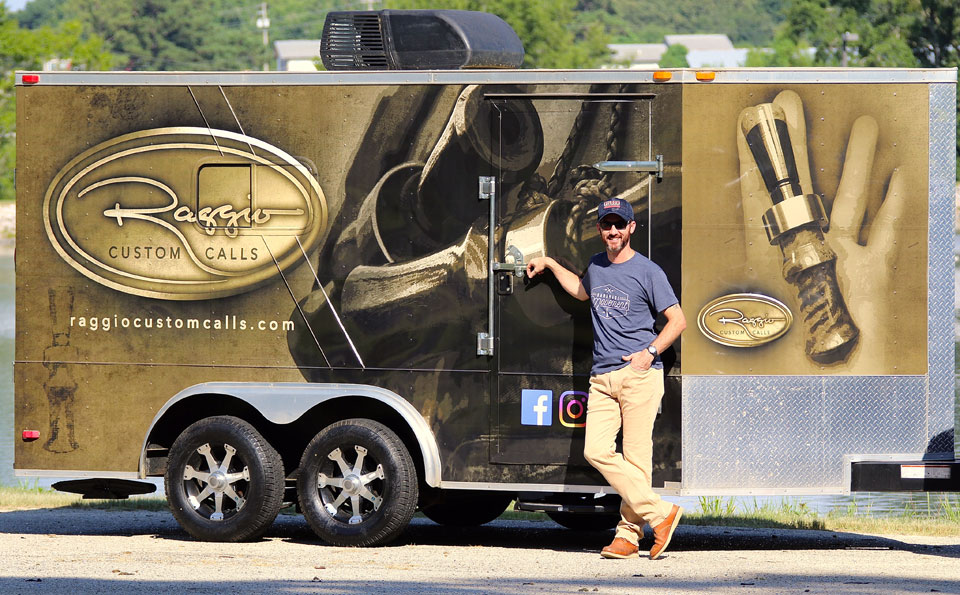
My dad started taking me duck hunting when I was only about 8 years old. He hunted public lands, and he was also involved in competition duck calling. He was in charge of the Mississippi State and Delta Regional Duck Calling Contests for 6-7 years, so naturally I got into competition duck calling when I was in high school. I won the Mississippi State Duck Calling Contest in 2009, and went to the World’s Championship Duck Calling Contest.
Although my dad never made a duck call, he really loved competition calling as much as I did. So, two of the items on my bucket list were to make duck calls for myself and my dad. I wanted a call that we could go hunting with and take ducks. I made my own tone board and flat jig. The first year after I made calls for my dad and myself, other hunters heard us call and asked me to make calls for them.
I was one of the finalists for the “Garden & Gun” magazine’s Made in the South Award, judged by T. Boone Pickens. Pictures of my calls were shown in “Garden & Gun.” That same year, a caller using one of my calls placed in the top 5 in a live duck-calling contest held in Maryland. After those two events, I started getting a number of calls and orders.
At that time, I had been working for the Caterpillar Company, but my business grew so quickly that I started Raggio Custom Calls in April 2013, and went into the duck-call-making business full-time. I have so many orders that I stay about a year behind on producing these custom calls. I make custom calls for Filson. Mine were the first duck calls that Filson started selling in its 122-year history.
I created a mobile duck-call shop this year. It’s a traveling duck call shop that allows me to go anywhere in the U.S. and pull up and make a duck call for someone from scratch. When a customer comes into my traveling shop, he can pick out two blocks of wood, and I can make his duck call right in front of him while he watches. My sister came up with the idea of the mobile duck-calling shop. Most people don’t have a clue as to what’s required to make a duck call, especially by hand, because there’s not a large number of custom duck-call manufacturers.
I bought a used trailer and had it wrapped with my design. Inside my portable duck-calling shop I have a lathe, a press, a band saw and the other tools that I need. The only ingredients I have to bring from my home in Raymond are the wooden blanks that I use to build the calls. I drill a 5/8” hole for the barrel of the call in those blocks of wood. My customers pick out those two blank blocks of wood and watch me turn those blocks of wood into duck calls made especially for them. The entire process takes me about 2 hours.
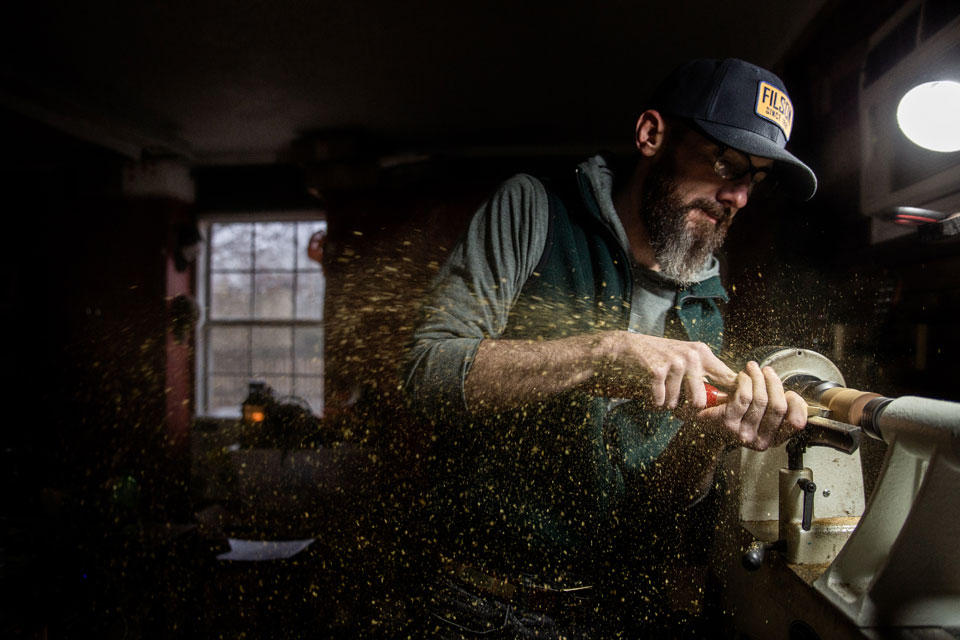
I finished my mobile duck-calling shop in June, and I’ve already done 7-8 different events. I pull that shop with me to the event and make duck calls for people who come to that event. I have more events scheduled for January and February. Besides getting paid for the calls, I’m usually hosted by some duck-hunting club or organization, and when I go to their events, they’ll often invite me to go duck hunting with them on private land. I’ve gotten to hunt some really great places that I may not ever have been able to hunt, if I hadn’t created my mobile duck call shop.
My custom calls sell for $300-$600, depending on the wood used to make the call and the amount of time. If my customers are in my shop when I make a call, I actually tune that call for the customer. There are many different types of wood that I can make a duck call from, but two of my most popular are Cocobolo and African blackwood. Because these woods are so dense, they produce great, quality sounds. In my calls, I put a J-frame tone board. The main reason that I like the J-frame call is because that’s the style of call that I grew up using. I like that sound and feel, and I like a back-pressure call.














